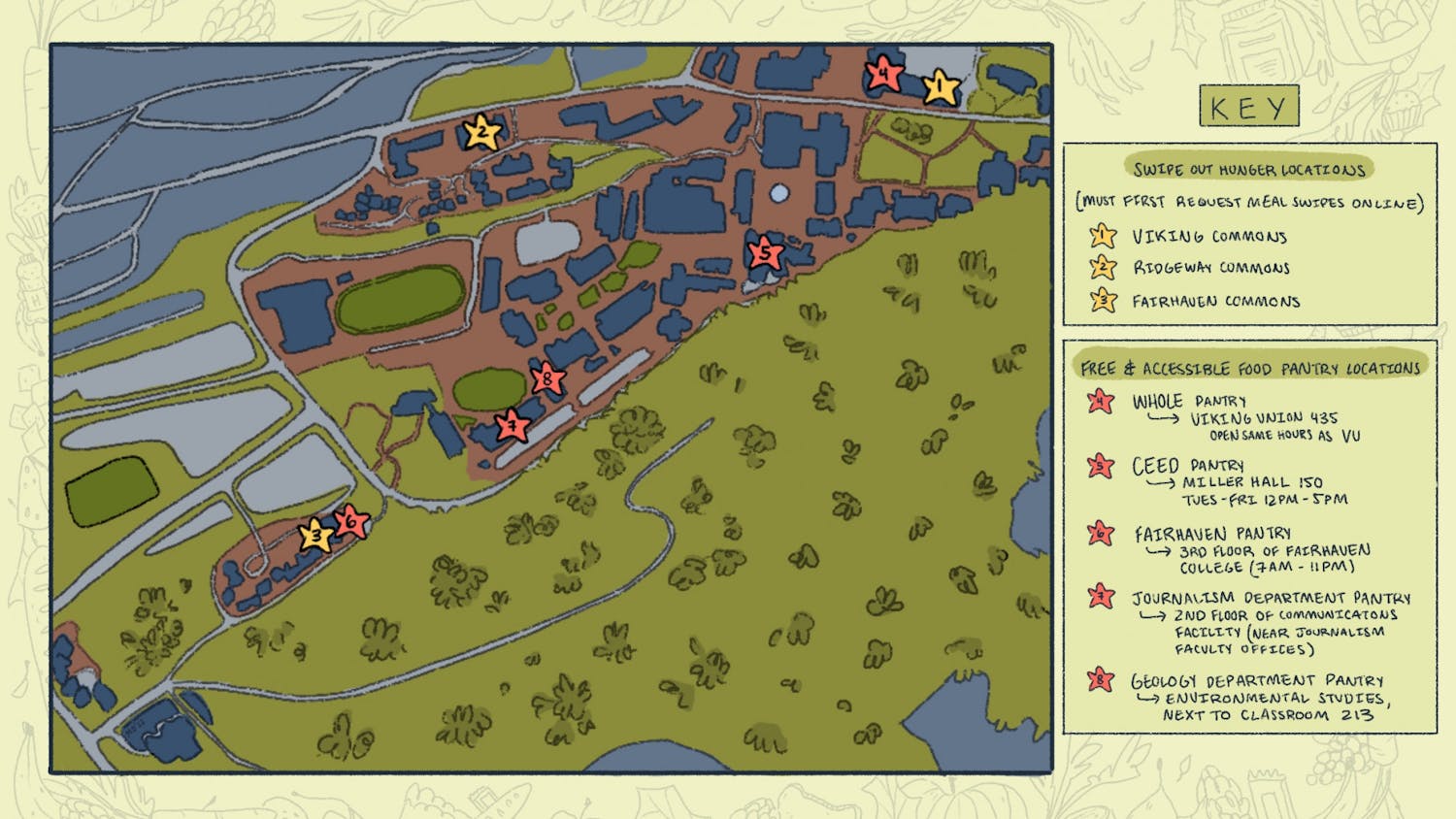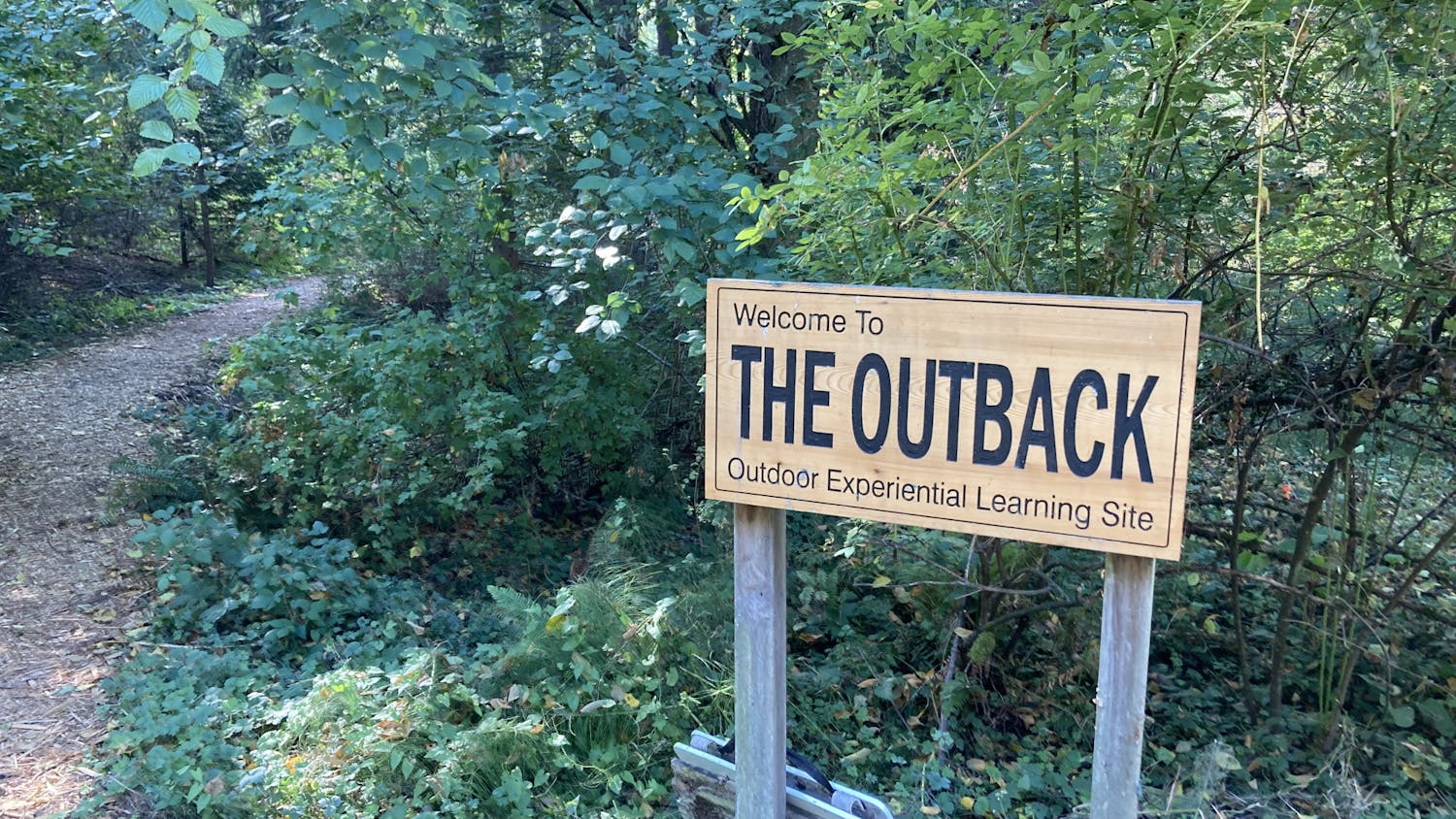Food prices haven’t stopped rising — take a walk down the aisle at your closest grocery store, and you’ll see it right on the price tags — it’s no secret.
From September 2021 to September 2022, the price index for food products rose 13 %, according to an October data release from the Bureau of Labor Statistics. Certain essential food groups’ pricing increased even more in that time span.
Dairy prices rose 15.9%
Frozen fruit and vegetable prices rose 14.1%
Meat product prices, including fish and poultry, rose 7.7%
Rice, pasta and cornmeal products rose 15.9%
“We've all felt the effects of inflation in the past year, and so access to food is even more critical,” said Terri Kempton, manager of the Outback Farm and Fairhaven food pantry.
Kempton said that she’s been seeing a lot more people visiting the food pantry in Fairhaven College, partly because it’s a visible resource, but also because “times are hard.”
Resources available to the community: Pantries, food banks and SNAP
There are multiple food pantries on Western’s campus that are stocked by the Outback Farm and organizations like the Miracle Food Network, as well as faculty and staff who keep the pantries full. Kempton said having these resources available allows students and community members a sense of relief.
“There doesn't have to be a constant concern of, ‘What am I gonna do next? Maybe I have a meal for tonight, but then what's gonna happen tomorrow?’” Kempton said. “To remove that concern and that ongoing, almost endless question, is having an answer of, ‘I'm okay. These are resources, and I can rely on them.’”
Noelle Beecroft, a coordinator for Washington State University’s Whatcom County extension’s SNAP-Ed program, volunteers on the board of directors for Foothills Food Bank in East Whatcom County. Beecroft said recently, she’s seen an influx of new people visiting the food bank. Younger people are visiting Foothills more, alongside people with full-time jobs that pay well but not well enough to afford essential products at a traditional grocery store.
“I had one woman tell me as she was exiting the food bank,” Beecroft recalled. “She was like, ‘You know, thank you so much.’ I said, ‘Of course.’ She was like, ‘You know, I'm a nurse. I work full time as a nurse. I've never had to use a food bank before, but I have to now.’”
In her position at WSU’s Whatcom Extension, Beecroft and her colleagues work to educate the community on ways to save money while eating well through recipe demonstrations, nutrition management courses and grocery store walk-throughs. It’s fun work, and Beecroft also sees it as very valuable.
“Every time someone leaves learning something new, and I think that's what matters,” Beecroft said. “I mean, these are skills that I feel like everyone should have access to.”
The majority of people the team works with are those who frequent food banks or who qualify for government assistance through the Supplemental Nutrition Assistance Program, or SNAP.
SNAP is a state-run program funded by federal money — to see if you are eligible and to apply, you can visit Washington State’s online services portal. On Monday, Nov. 14, Western will be hosting a SNAP webinar for students to learn more about the program as part of the University’s Hunger and Homelessness Awareness Week event lineup.
Grayson Molyneux, who lives in Bellingham, started using Washington’s SNAP program when they were 18. They said the application process was straightforward, and every store they shopped at was accommodating.
People utilizing SNAP receive an Electronic Benefits Transfer card, which they can use at participating stores. On campus, Miller Market accepts EBT payments, and a list of SNAP-eligible grocery stores in Washington can be found here.
Recently, Molyneux started making more money from tips and lost their SNAP eligibility. Molyneux said they are right above “the cusp” of being eligible — going off of SNAP has been difficult for them because they no longer have an allotted amount set aside for food.
“I don't want to spend as much on groceries as I did before. Before I was like, ‘Oh yeah, I can totally go grocery shopping right now — I have a budget for groceries,” Molyneux said. “Versus, right now, it's like, ‘Oh, I'm a little short on rent, so I guess it's coming outta my grocery budget.’”
Molyneux said that because of that, they want to see more community resources in the Bellingham area — and more people who know the resources are there for them.
Looking for an affordable meal? Check out this recipe for black bean and rice burgers
Beecroft said making creative recipes out of common staples that are available at pantries and food banks — like canned beans, rice and canned fish — can allow people to live within their means and still eat healthy.
One recipe that Beecroft recommends from these ingredients is black bean burgers.
“If I don’t have meat in the fridge, and I want something protein-rich, I'll usually make a black bean patty,” Beecroft said. “I'll just mash black beans with a fork, add some seasonings in, add an egg in, mix it, form it into a patty and you can either stick it in the oven, or you can cook it on a skillet.
“It's just a meal that's high in protein and veggies and fiber and all the good stuff, that is affordable and easy and tastes really good.”
We tested Beecroft’s recipe — almost all of the ingredients are commonly found for free at the pantries students and community members have access to on campus or can be bought for a low price at the grocery store. Another perk of this recipe is that it’s adjustable. Don’t have black beans on hand? Chickpeas work well! No bun? Toasted sandwich bread with some butter or olive oil works great, too!
To learn how to make one version of Beecroft’s recipe, check out our video where we test it out and screenshot our recipe below.
Black bean and rice burgers
Prep time: One hour (rice cookin’ time!)
Cook time: 15 minutes
Makes six patties
Ingredients
For patties:
One can black beans
One cup cooked brown rice
Half an onion, minced
Half a bell pepper, diced
Extra frozen vegetables — we used corn!
One egg, scrambled (*note from Liz — we did not have an egg when we made ours. We wished we did. But the patties are delicious without using an egg, and are vegan friendly! Just slightly … crumbly*)
Spices - use what you’ve got! We used salt, pepper, cumin, chili powder, paprika and cayenne.
Toasted bread or buns for serving
Optional — toppings! We used some American cheese, a bit of the onion, tomato, avocado, lettuce and a sauce made with some leftover cilantro, sour cream and green salsa found at the W.H.O.L.E pantry on campus. Yum!
Instructions:
Combine drained beans, cooked rice, onion, pepper, any other veggies and spices in a large mixing bowl, and mash with fork or clean hands
Heat a skillet with some oil
Form patties from mixture, and cook with medium heat on each side for five minutes
Serve on bread or bun with toppings of your choice
Enjoy your delicious masterpiece
Looking for more recipes? Check out this cookbook published by the Outback Farm!





